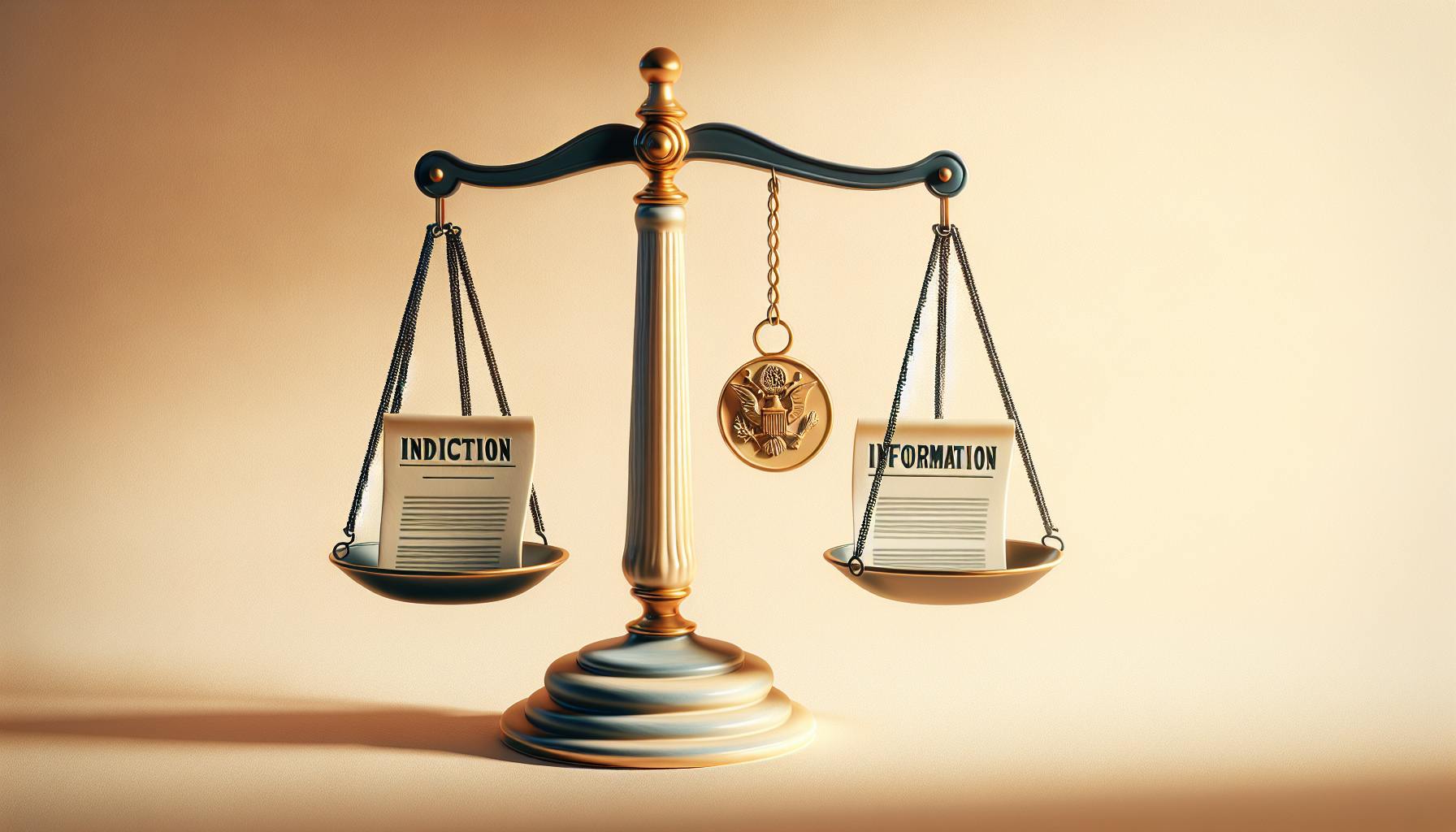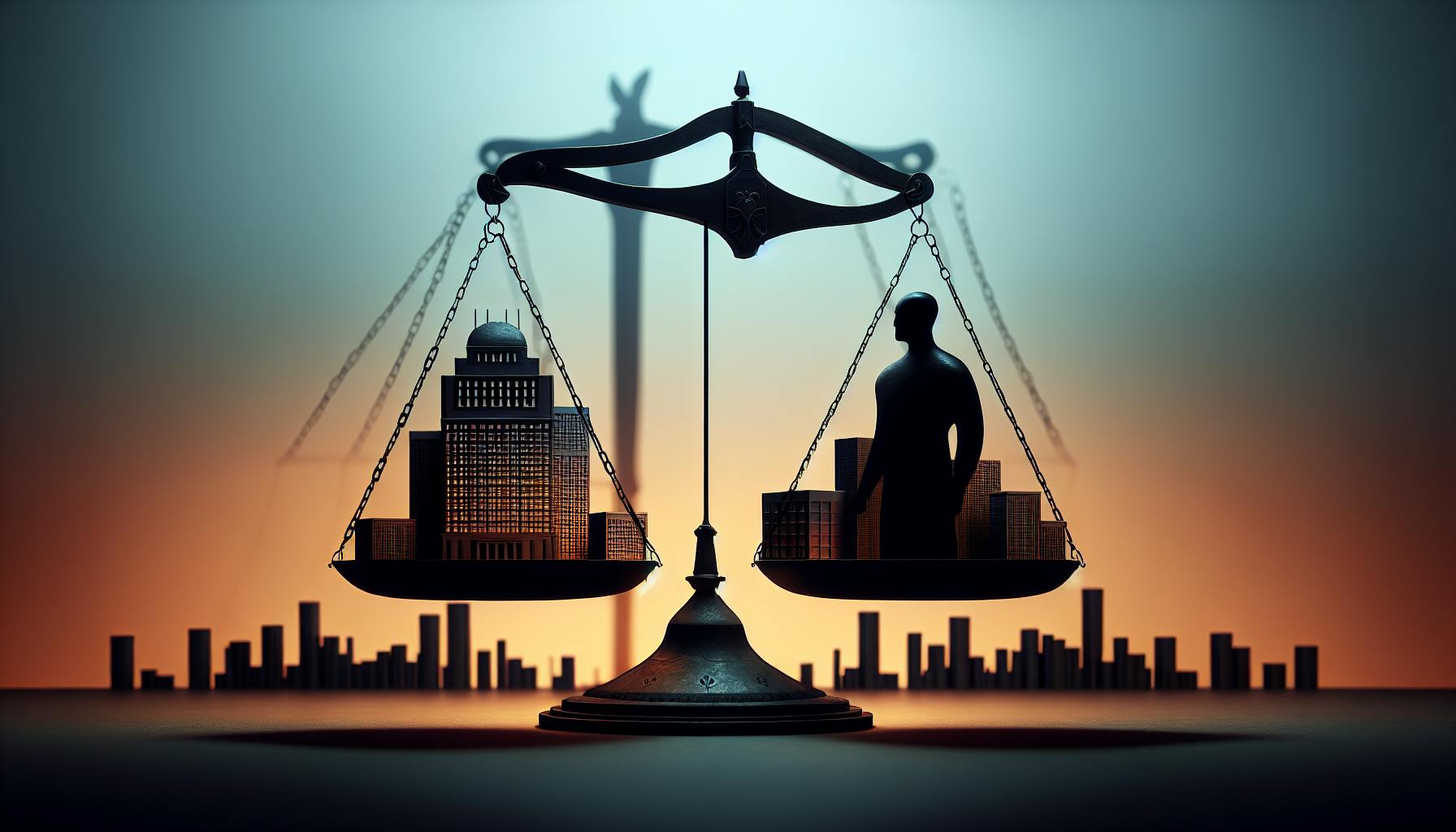Most would agree that understanding the framework of Congress as outlined in Article I of the U.S. Constitution is essential for comprehending the American system of governance.
In this post, you'll gain critical insight into the structure, powers, and procedures of the legislative branch as laid out in Article I.
We'll explore the bicameral makeup of Congress, qualifications and authority of the House and Senate, the lawmaking process, and more to synthesize the foundational role Congress serves in our democracy.
Introduction to the Constitutional Framework of Congress
Congress serves as the legislative branch of the federal government under the U.S. Constitution. Article I lays out essential elements of its structure, powers, and responsibilities that comprise the framework underlying this vital component of America's system of checks and balances.
Understanding the Legislative Branch in American Democracy
The Framers created Congress to serve as the lawmaking body of the federal government. Its powers to draft, debate, and enact legislation are core to the democratic process. By representing the will of citizens, Congress balances the executive and judicial branches.
Article I of the Constitution: The Blueprint for Lawmaking
Article I authorizes Congress to make laws, collect taxes, coin money, regulate commerce, declare war, and more. Sections 8 and 9 detail specific powers and limits to ensure balance of power between federal and state governments. This constitutional blueprint shapes the scope of congressional authority.
The Bicameral Structure: House of Representatives and U.S. Senate
To balance federal power, the Framers established a bicameral legislature with the House and Senate. Members of the House serve shorter terms and represent smaller districts. Senators have longer terms and represent entire states. This structure facilitates debate and consensus-building.
The Powers of Congress Outlined in Article I, Section 8
Article I, Section 8 enumerates key congressional powers like imposing taxes, borrowing money, regulating commerce, establishing courts and post offices, declaring war, raising armies, and more. These authorities allow Congress to govern and lay the foundation for a functioning federal government.
Prohibitions and Constraints: Article I, Section 9
While Section 8 establishes congressional powers, Section 9 imposes limits to prevent abuse of power. For example, it bans bills of attainder and ex post facto laws that could undermine due process. These constraints reinforce separation of federal powers for good governance.
What is Article 1 structure of Congress?
Article I of the U.S. Constitution establishes the legislative branch of the federal government, known as Congress. This article outlines the basic structure and powers of Congress.
The Constitution divides Congress into two chambers:
- The House of Representatives
- The Senate
The House of Representatives
The House of Representatives is made up of 435 elected members, divided among the 50 states based on population. Members of the House serve two-year terms.
Some key powers given to the House of Representatives in Article I include:
- Originating bills related to revenue and taxation
- Initiating impeachment proceedings
- Electing the President in the case of an Electoral College tie
The Constitution also establishes qualifications for members of the House, such as requiring Representatives to be at least 25 years old and a U.S. citizen for at least 7 years.
The Senate
Unlike the House, each state has two Senators, for a total of 100 members. Senators serve six-year terms.
The Senate has several exclusive powers under Article I, including:
- Confirming Presidential appointments
- Ratifying treaties
- Trying impeachment cases initiated by the House
Senators must meet age, citizenship, and residency requirements to hold office.
Overall, Article I provides the essential blueprint for the legislative branch by outlining the structure, powers, and rules under which Congress operates. Positioning this article first underscores the Framers' vision of the legislature as the preeminent branch closest to the people.
What is the focus of Article I of the Constitution?
Article I of the Constitution focuses on establishing the legislative branch of the federal government and enumerating its powers. Specifically, it:
- Creates Congress as a bicameral legislature consisting of the House of Representatives and Senate
- Lays out qualifications and rules for House and Senate membership
- Grants Congress various powers like the ability to levy taxes, borrow money, regulate commerce, coin money, and declare war
- Establishes limits on Congressional powers as well as states' powers
- Details rules for legislative procedures like elections, sessions, compensation, and impeachment
In summary, Article I creates the structure and framework for the U.S. Congress to function as the legislative body of the federal government. It carefully outlines the scope of authority granted to Congress as well as checks on that authority. Understanding Article I is key to understanding the basic framework that underpins the legislative process at the federal level.
What is Article I about the Constitution?
Article I of the U.S. Constitution establishes the legislative branch of the federal government, known as Congress. It details the basic framework and responsibilities of Congress.
Some key points about Article I:
-
It creates a bicameral (two chamber) legislature consisting of the House of Representatives and the Senate.
-
It enumerates specific legislative powers granted to Congress, including the power to levy taxes, borrow money, regulate commerce, coin money, and declare war.
-
It establishes qualifications and rules for House and Senate membership, such as age and citizenship requirements.
-
It outlines legislative procedures like quorum rules, impeachment, bill passage, and veto overrides.
In essence, Article I provides the fundamental structure and authority for the legislative branch to make new laws and conduct oversight of the executive branch. The framers intended for the Congress to be the preeminent policymaking body of the federal government. Article I lays the groundwork for how laws get made in America's system of government.
sbb-itb-e93bf99
sbb-itb-e93bf99
What are some of Congress's other powers outlined in Article I?
Congress has several key powers outlined in Article I of the Constitution:
-
Make Laws: Congress has the power to make laws that are necessary and proper to carry out their constitutional duties. This includes drafting, debating, and passing legislation.
-
Declare War: Only Congress has the power to officially declare war against another country. The president cannot declare war unilaterally.
-
Raise and Spend Money: Congress has taxation powers and oversees federal spending to provide for the national defense and general welfare. This includes imposing taxes, borrowing money, budgeting federal funds, and overseeing their proper expenditure.
-
Impeach Officers: Congress has the sole power to impeach federal officers including the president, vice president, federal judges, and other civil officers for conviction of treason, bribery, or other high crimes and misdemeanors.
So in summary, Article I grants Congress key authorities related to making laws, conducting war, managing federal finances, and providing oversight through impeachment powers. This establishes Congress as the legislative branch of government with essential checks on the power of the executive branch.
The House of Representatives: Composition and Authority
The House of Representatives is composed of 435 members, with each state receiving a number of representatives based on its population. The House has several unique powers, including initiating revenue bills, impeaching federal officials, and electing the President in the case of an Electoral College tie.
Representation and Apportionment in the House
The number of representatives a state has is determined every 10 years by the census, which counts the national population. States are apportioned representatives based on their share of the total U.S. population. States with larger populations receive more representatives. There is a minimum of one representative per state.
Qualifications for House Members and Special Powers
To become a representative, one must be at least 25 years old, a U.S. citizen for at least 7 years, and a resident of the state they are representing. The House has the sole power to originate bills for raising revenue and impeach federal officials, including the President.
Leadership and Governance: The Speaker and Party Roles
The Speaker of the House is elected by House members to preside over debates, make rulings on procedures, and manage legislative business. The Speaker is third in line to succeed the presidency after the Vice President. The majority and minority party also elect their own party leaders to coordinate legislative strategy.
Committee System and the Lawmaking Process
Much of the legislative work in the House occurs within committees that specialize in certain policy areas. Committee members research issues, hold hearings, and revise bills before they reach the House floor. This allows the lawmaking process to be more efficient.
House Rules of Proceedings and Legislative Customs
The Constitution allows the House to determine its own procedural rules. These rules govern aspects of the lawmaking process like quorum requirements, debate limits, and voting procedures. Over time, legislative customs like holds, filibusters, and logrolling have also emerged.
The U.S. Senate: Unique Roles and Responsibilities
The Senate plays a vital role in the legislative process as the upper chamber of Congress. With two Senators representing each state regardless of population, it provides equal representation for all states in one of the federal government's lawmaking bodies.
Equal Representation: Senate Membership and Terms
The Constitution grants each state two Senators who serve staggered six-year terms. Having only a third of the Senate up for election every two years provides continuity from one Congress to the next. The Framers designed the Senate to be a more stable legislative body than the House.
Qualifications and Exclusive Powers of the Senate
To become a Senator, one must be at least 30 years old, a U.S. citizen for nine years, and a resident of the state they represent. The Senate has the sole power to approve treaties and presidential appointments.
Leadership Structure and Committee Influence
The Senate leadership includes the Vice President, President pro tempore, party leaders, and whips. Senate committees have jurisdiction over legislation, conducting hearings and investigations. Committee chairs have considerable influence over the agenda.
Senate Rules of Procedure and Traditions
Senate rules allow unlimited debate, unless three-fifths vote to invoke cloture. Unanimous consent agreements limit debate. The filibuster tactic can allow minorities to block legislation. These rules shape the culture of deliberation.
The Distinctive Roles of the House and Senate in the Lawmaking Process
Differences in Representation and Apportionment
The House of Representatives is composed of 435 members, with each member representing approximately the same number of constituents in their respective congressional districts. Seats are apportioned to states based on population, as determined by the decennial census.
In contrast, the Senate consists of 100 members, with two Senators representing each state regardless of population. This grants equal representation to all states in the Senate's upper chamber. The Framers designed this bicameral structure to balance the competing interests of large and small states.
Contrasting Rules and Legislative Procedures
The House and Senate feature notable differences in their procedural rules and legislative processes. The Senate typically allows for more extended debate and discussion than the House. There is no limit on the length of debate in the Senate, whereas the House limits debate through mechanisms like the hour rule and motion to close debate.
Amending legislation also follows different protocols. Senators can add amendments throughout much of the process, while House amendments must meet more stringent rules to be considered.
Leadership and Power: A Comparative Analysis
The House Speaker and Senate Majority Leader hold the primary leadership roles in their respective chambers. The Speaker wields substantial power over the legislative agenda, committee assignments, and internal processes of the House. Senate leadership derives influence through seniority, committee positions, parliamentary maneuvering, and consensus-building across party lines.
Gaining power within each chamber depends on seniority and committee assignments. Junior Representatives must gain favor with party leadership to secure influential committee positions. Senators exercise authority through longevity and ascending into chair or ranking member roles on key committees.
Conclusion: Synthesizing the Structure and Role of Congress
To conclude, this article has explored the origins and intricacies of the legislative branch under Article I of the Constitution. Key takeaways regarding Congress's purpose, organization, authority, and operations were summarized.
Reflecting on the Framers' Vision for the Legislative Branch
The Framers of the Constitution intended for Congress to be the preeminent branch, possessing expansive legislative powers to craft laws for the nation. They structured Congress with checks on its authority, including bicameralism to avoid hasty decision-making. Overall, the modern Congress still fulfills the Framer's vision of a deliberative, representative, lawmaking body. However, factors like rising partisanship test the Constitution's separation of powers in new ways.
The Evolution of Congressional Powers and Responsibilities
While the fundamental structure remains intact, Congressional powers have expanded over time. Modern areas of legislation like healthcare, civil rights, and social services would have been unimaginable to the Framers. The balance of power between Congress and the presidency has also shifted, sparking new questions over executive authority and accountability. Still, the Constitution's flexibility has allowed Congress to exercise authority over new policy domains.
The Impact of Congress on American Governance and Civics
As the most representative branch, Congress profoundly shapes American governance. Its power to mobilize citizens, craft compromise, and channel public opinion impacts civic life immensely. While partisanship causes friction, Congress's democratic nature still binds it to the people. Overall, it remains deeply ingrained in upholding constitutional ideals of self-rule, justice, and national identity. Reforms may be needed, but Congress fundamentally channels the voice of the American public.


